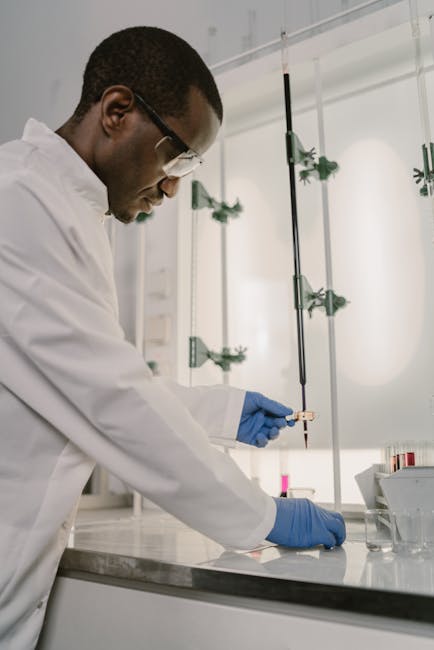
How Accurate Standards Enhance the Reliability of Polygraph Tests
Polygraph tests, commonly known as lie detector tests, have long been a tool in criminal investigations and pre-employment screenings. Despite their widespread use, the reliability of these tests often comes under scrutiny. The key to improving the reliability of polygraph tests lies in the establishment and adherence to accurate standards. In this blog post, we will explore how these standards enhance the accuracy and credibility of polygraph tests, making them a more reliable tool for truth verification.
Understanding Polygraph Tests
A polygraph test measures physiological responses such as heart rate, blood pressure, respiration, and skin conductivity while a person answers a series of questions. The underlying assumption is that deceptive answers will produce physiological responses that can be detected by the polygraph. While this concept seems straightforward, the accuracy of polygraph tests is influenced by numerous factors. Implementing accurate standards can significantly mitigate these factors, leading to more reliable results.
The Role of Standards in Polygraph Testing
Standards in polygraph testing are crucial for several reasons. First, they ensure consistency in testing procedures, which is vital for obtaining reliable results. Second, they provide a framework for the ethical administration of tests, protecting both the examinee and the examiner. Finally, standards help establish the credibility of polygraph results in legal and professional settings.
How Standards Improve Test Accuracy
Implementing accurate standards involves various elements, including examiner qualifications, testing environment, question formulation, and interpretation of results. Let’s delve into each of these elements to understand how they contribute to the reliability of polygraph tests.
Examiner Qualifications
One of the most critical factors in the reliability of polygraph tests is the expertise of the examiner. The American Polygraph Association (APA) sets stringent guidelines for examiner training and certification. Examiners must undergo comprehensive training programs, pass rigorous exams, and participate in ongoing education to maintain their certification. By ensuring that only qualified professionals conduct polygraph tests, standards significantly enhance test accuracy.
The Testing Environment
The environment in which a polygraph test is conducted can significantly impact its results. Standards dictate that tests should be conducted in a controlled, distraction-free environment to minimize external influences on the examinee’s physiological responses. A standardized environment ensures that the results are solely reflective of the examinee’s responses to the questions posed, rather than external stressors.
Question Formulation
The formulation of questions is another area where standards play a pivotal role. Questions must be clear, concise, and relevant to the matter being investigated. Standards provide guidelines for question construction to ensure that they are free from ambiguity and bias, which could otherwise lead to inaccurate results. Additionally, the order and manner in which questions are presented are standardized to maintain consistency across tests.
Interpretation of Results
Interpreting polygraph results requires a high level of expertise and adherence to standardized procedures. Standards define the methodologies for analyzing physiological data to determine the likelihood of deception. By following these methodologies, examiners can provide more accurate and reliable interpretations of polygraph results.
Statistics and Success Rates
Research indicates that when conducted under standardized conditions, polygraph tests can achieve accuracy rates of up to 90% (source: National Research Council). This high level of accuracy underscores the importance of adhering to established standards. It also highlights the potential for polygraph tests to be a reliable tool when used appropriately.
Examples of Successful Polygraph Usage
Polygraph tests have been successfully used in various contexts, providing critical information in criminal investigations and security screenings.
Criminal Investigations
In numerous criminal cases, polygraph tests have helped corroborate evidence or clear suspects. For example, in the 2012 case of the missing person in Colorado, polygraph testing was used to narrow down suspects, ultimately leading to the resolution of the case (source: Denver Post). By adhering to standardized procedures, investigators were able to rely on the results as a valuable tool in their investigation.
Pre-Employment Screening
Many law enforcement and government agencies use polygraph tests as part of their hiring process. By implementing standardized testing procedures, these agencies can better assess the honesty and integrity of potential employees. This practice ensures that only candidates who meet the highest ethical standards are selected for sensitive positions.
Actionable Tips for Improving Polygraph Test Reliability
For organizations and professionals looking to improve the reliability of polygraph tests, consider the following tips:
- Ensure Examiner Certification: Always verify that the examiner is certified by a reputable organization such as the APA.
- Maintain a Controlled Environment: Conduct tests in a quiet, distraction-free setting to ensure accurate results.
- Adhere to Question Formulation Standards: Craft questions that are clear, concise, and free from bias.
- Follow Standardized Interpretation Guidelines: Use established methodologies for analyzing test results.
- Stay Informed About Advances: Keep up with the latest research and advancements in polygraph technology and methodologies.
Conclusion
In conclusion, the reliability of polygraph tests is significantly enhanced by the implementation of accurate standards. From examiner qualifications to the testing environment, question formulation, and result interpretation, each element plays a crucial role in ensuring test accuracy. By adhering to these standards, professionals can utilize polygraph tests as a reliable tool for truth verification in various contexts. As the technology continues to evolve and standards are further refined, the reliability of polygraph tests is likely to improve even further.
For those considering the use of polygraph tests, understanding and applying these standards is essential to achieving reliable and credible results. As always, staying informed and engaged with the latest developments in the field will further enhance the effectiveness of polygraph testing as a vital tool in truth verification.
